#Clean energy technologies
Explore tagged Tumblr posts
Text

🌱 Powering the Future with Renewable Energy 🌍 Dive into a critical evaluation of photovoltaics and wind turbines in modern engineering. Let’s explore how these sustainable solutions are transforming the world and paving the way for a greener tomorrow💡✨
#Solar and wind energy#Renewable energy advancements#Photovoltaic efficiency#Wind turbine optimization#Clean energy technologies#Solar energy systems#Wind farm design#Renewable power systems
0 notes
Text
Transforming Energy Use: Key Trends and Technologies for a Greener 2024

As we move towards 2024, the quest for a greener and more sustainable future has never been more critical. The focus on renewable energy solutions is reshaping the way we power our homes and businesses. With advancements in clean energy technologies and a growing emphasis on energy efficiency, it's clear that the landscape of energy use is undergoing a significant transformation. Here’s a look at the top trends and technologies in sustainable energy that are set to drive the green energy revolution in 2024.
1. Solar Panel Installations
One of the most prominent trends in renewable energy is the continued growth of solar panel installations. As solar energy systems become more affordable and efficient, more homeowners and businesses are opting for solar panels for their properties. This shift is driven by advancements in technology and government incentives.
Solar panel installation companies now offer comprehensive services, including system fitting and setup for homes. These services simplify the transition to solar energy and highlight its long-term cost benefits. The rise in solar panel use reflects the increasing acceptance of green energy solutions as a viable alternative to traditional power sources.
2. Hybrid Solar Power Systems
In Australia, hybrid solar power systems are gaining traction by combining the benefits of solar energy with other renewable sources. For example, integrating a wind turbine with solar panels maximises energy generation by harnessing both wind and solar power. This integration not only improves energy efficiency but also provides a more reliable power solution.
The Australian renewable energy industry continues to explore and implement these hybrid systems to manage the intermittent nature of renewable sources, ensuring a more consistent energy supply and reducing reliance on non-renewable sources.
3. Advancements in Wind and Solar Power
Combining wind and solar energy is increasingly popular due to its potential for a more stable and reliable energy supply. Wind and solar power for homes complement each other by harnessing natural resources at different times—solar energy during the day and wind energy 24/7, especially in areas with consistent wind patterns.
Innovations in wind power technology are enhancing turbine efficiency, contributing to a more balanced and effective integration of wind and solar systems, and promoting a cleaner, more sustainable energy future.
4. Innovative Green Energy Solutions
New technologies in green energy are accelerating the shift toward more sustainable practices. In Australia, green energy is seeing a surge in innovative solutions that enhance the performance of renewable sources. Technologies like solar photovoltaic systems and wind energy are leading this transformation.
Advancements in renewable energy technology, including high-efficiency solar PV systems, are making solar power more accessible and effective. This progress supports the goal of achieving a clean, green energy future.
5. Energy Efficiency and Conservation
With the growth of renewable energy adoption, there is an increased focus on energy efficiency and conservation. Green power in Australia emphasises optimising energy use alongside integrating renewable sources. Sustainable energy solutions involve not only switching to renewable energy but also improving energy consumption and management.
Efficient solar installations and the use of wind turbines help reduce overall energy consumption and minimise environmental impact. Consumers are increasingly recognising the benefits of energy-efficient practices, which complement their investments in renewable energy systems.
6. Top Solar Panel Companies
When investing in solar power installation, finding the best solar panel companies is essential. With numerous options available, choosing a reputable company that offers high-quality panels and installation services is crucial. Local solar panel installation companies can provide expert guidance tailored to your specific needs.
Ensuring your solar system is set up correctly and operates efficiently involves working with reliable installers. The increasing number of panel installers reflects the growing demand for solar energy solutions and the commitment to expanding access to clean energy technologies.
7. Future Trends in Renewable Energy
Looking forward, renewable energy sources will continue to drive innovation and growth in the energy sector. The integration of solar and wind technologies is expected to become more common, providing enhanced energy solutions for various applications. The development of wind energy systems will play a significant role in meeting future energy demands.
In summary, the transformation of energy use towards a greener future is supported by advancements in clean energy technologies and the growing adoption of renewable energy solutions. By embracing these trends and technologies, individuals and businesses can contribute to a more sustainable and environmentally-friendly energy landscape. As we move into 2024, staying informed about these developments will be key to making informed decisions and driving the transition to a greener future.
Innovative energy solutions for both individuals and businesses, ensuring a sustainable future.
To know more visit our website: laawunenergy.com.au
#Renewable Energy Solutions#Solar Panel Installations#Clean Energy Technologies#Growth Of Renewable Energy
0 notes
Text
"A 1-megawatt sand battery that can store up to 100 megawatt hours of thermal energy will be 10 times larger than a prototype already in use.
The new sand battery will eliminate the need for oil-based energy consumption for the entire town of town of Pornainen, Finland.
Sand gets charged with clean electricity and stored for use within a local grid.
Finland is doing sand batteries big. Polar Night Energy already showed off an early commercialized version of a sand battery in Kankaanpää in 2022, but a new sand battery 10 times that size is about to fully rid the town of Pornainen, Finland of its need for oil-based energy.
In cooperation with the local Finnish district heating company Loviisan Lämpö, Polar Night Energy will develop a 1-megawatt sand battery capable of storing up to 100 megawatt hours of thermal energy.
“With the sand battery,” Mikko Paajanen, CEO of Loviisan Lämpö, said in a statement, “we can significantly reduce energy produced by combustion and completely eliminate the use of oil.”
Polar Night Energy introduced the first commercial sand battery in 2022, with local energy utility Vatajankoski. “Its main purpose is to work as a high-power and high-capacity reservoir for excess wind and solar energy,” Markku Ylönen, Polar Nigh Energy’s co-founder and CTO, said in a statement at the time. “The energy is stored as heat, which can be used to heat homes, or to provide hot steam and high temperature process heat to industries that are often fossil-fuel dependent.” ...
Sand—a high-density, low-cost material that the construction industry discards [Note: 6/13/24: Turns out that's not true! See note at the bottom for more info.] —is a solid material that can heat to well above the boiling point of water and can store several times the amount of energy of a water tank. While sand doesn’t store electricity, it stores energy in the form of heat. To mine the heat, cool air blows through pipes, heating up as it passes through the unit. It can then be used to convert water into steam or heat water in an air-to-water heat exchanger. The heat can also be converted back to electricity, albeit with electricity losses, through the use of a turbine.
In Pornainen, Paajanen believes that—just by switching to a sand battery—the town can achieve a nearly 70 percent reduction in emissions from the district heating network and keep about 160 tons of carbon dioxide out of the atmosphere annually. In addition to eliminating the usage of oil, they expect to decrease woodchip combustion by about 60 percent.
The sand battery will arrive ready for use, about 42 feet tall and 49 feet wide. The new project’s thermal storage medium is largely comprised of soapstone, a byproduct of Tulikivi’s production of heat-retaining fireplaces. It should take about 13 months to get the new project online, but once it’s up and running, the Pornainen battery will provide thermal energy storage capacity capable of meeting almost one month of summer heat demand and one week of winter heat demand without recharging.
“We want to enable the growth of renewable energy,” Paajanen said. “The sand battery is designed to participate in all Fingrid’s reserve and balancing power markets. It helps to keep the electricity grid balanced as the share of wind and solar energy in the grid increases.”"
-via Popular Mechanics, March 13, 2024
--
Note: I've been keeping an eye on sand batteries for a while, and this is really exciting to see. We need alternatives to lithium batteries ASAP, due to the grave human rights abuses and environmental damage caused by lithium mining, and sand batteries look like a really good solution for grid-scale energy storage.
--
Note 6/13/24: Unfortunately, turns out there are substantial issues with sand batteries as well, due to sand scarcity. More details from a lovely asker here, sources on sand scarcity being a thing at the links: x, x, x, x, x
#sand#sand battery#lithium#lithium battery#batteries#technology news#renewable energy#clean energy#fossil fuels#renewables#finland#good news#hope#climate hope
1K notes
·
View notes
Text
Dandelion News - September 8-14
Like these weekly compilations? Tip me at $kaybarr1735 or check out my new(ly repurposed) Patreon!
1. Pair of rare Amur tiger cubs debuting at Minnesota Zoo are raising hopes for the endangered species

“[The Minnesota Zoo’s] Amur tigers have produced 57 cubs, [… 21 of which] have gone on to produce litters of their own, amounting to another 86 cubs. […] “They’re showing a lot of resiliency, which is something that we work hard for in human care. We want these animals to have a lot of confidence and be able to adapt to new environments just as they’re doing today.””
2. Powered by renewable energy, microbes turn CO₂ into protein and vitamins
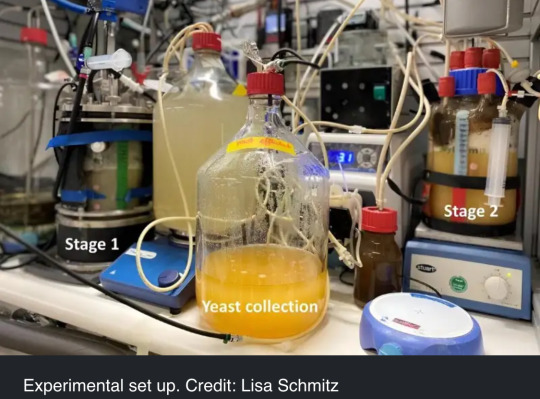
“The team designed a two-stage bioreactor system that produces yeast rich in protein and vitamin B9. [… The protein] levels in their yeast exceed those of beef, pork, fish, and lentils. […] Running on clean energy and CO2, the system reduces carbon emissions in food production. It uncouples land use from farming, freeing up space for conservation[… and] will help farmers concentrate on producing vegetables and crops sustainably.”
3. JCPenney Launches Apparel Collection Aimed At Wheelchair Users

“A major department store is rolling out a new line of clothing specifically tailored to meet the needs of women who use wheelchairs featuring options for both everyday wear and special occasions. [… The clothing have] modifications like zippers located for easy access, pocket positioning and extended back rises optimized for the seated position and shorter sleeves to limit interference with wheels.”
4. Snails bred in Edinburgh Zoo sent to re-populate species in French Polynesia
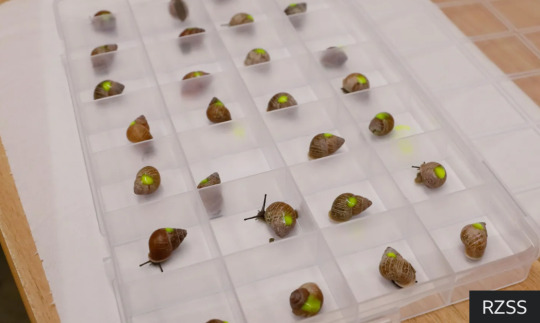
“Thousands of rare partula snails bred at Edinburgh Zoo are to be released in French Polynesia to restore the wild population of the species.The last surviving few of the species were rescued in the early 1990s[….] 15 species and sub-species [are being bred in zoos for repopulation], the majority of which are classed as extinct in the wild.”
5. [NH Joins 19 Other States] to Provide Essential Behavioral Health Services Through Mobile Crisis Intervention Teams
“[CMS] approved New Hampshire’s Medicaid State Plan Amendment for community-based mobile crisis intervention teams to provide services for people experiencing a mental health or substance use disorder crisis. […] The multidisciplinary team provides screening and assessment; stabilization and de-escalation; and coordination with and referrals to health, social, and other services, as needed.”
6. Recovery plan for Missouri population of eastern hellbender
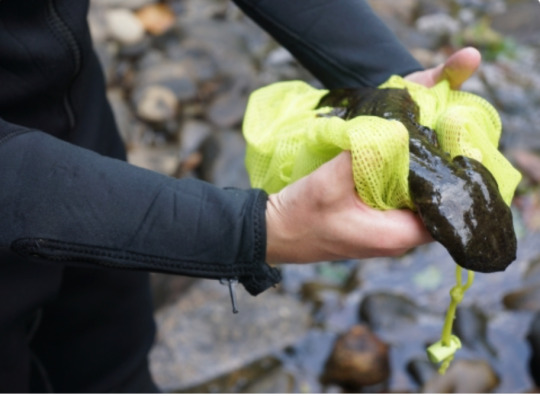
“It is expected that recovery efforts for the Missouri DPS of the eastern hellbender will reduce sedimentation and improve water quality in the aforementioned watersheds, which will also improve drinking water, as well as benefit multiple federally listed mussels, sport fish and other aquatic species.”
7. How $7.3B will help rural co-ops build clean power—and close coal plants
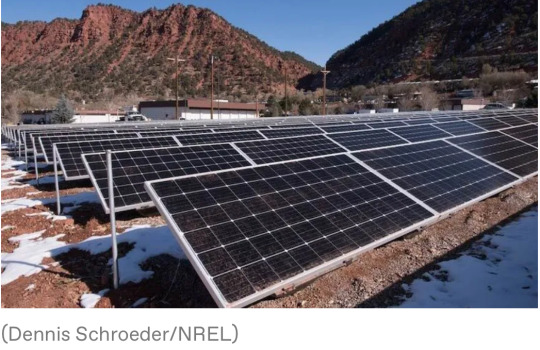
“[The funds are] serving about 5 million households across 23 states [… to] build wind and solar power, which is now cheaper than coal-fired power across most of the country. […] Some of it will be used to pay down the cost of closing coal plants[….] federal funding could help co-ops secure enough wind, solar, and battery resources to retire their entire coal capacity by 2032, cutting carbon emissions by 80 to 90 percent and reducing wholesale electricity costs by 10 to 20 percent[….]”
8. Native-led suicide prevention program focuses on building community strengths

“[Indigenous researchers have] designed programs that aim to build up a community’s endemic strengths, rather than solely treating the risks facing individuals within that community. By providing support and resources that enable access to Alaska Native cultural activities, they hope to strengthen social bonds that build resilience. […] “In a Yup’ik worldview, suicide is not a mental health disorder, and it’s not an individual affliction, it’s a disruption of the collective.””
9. Another rare Javan rhino calf spotted at Indonesia park

“A new Javan rhino calf has been spotted in an Indonesian national park, the facility's head said Friday, further boosting hopes for one of the world's most endangered mammals after two other […] calves were spotted earlier this year at the park, which is the only habitat left for the critically endangered animal.”
10. Transparent solar cells can directly supply energy from glass surfaces
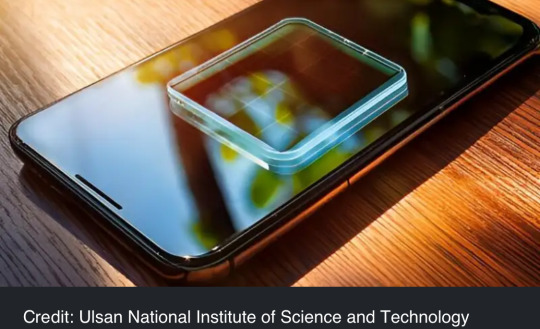
“[Researchers have] unveiled a method of supplying energy directly from glass of buildings, cars, and mobile devices through transparent solar cells. […] It has also succeeded in charging a smartphone using natural sunlight. It also proved the possibility that a screen of a small mobile device can be used as an energy source.”
September 1-7 news here | (all credit for images and written material can be found at the source linked; I don’t claim credit for anything but curating.)
#hopepunk#good news#nature#tiger#endangered species#sustainability#animals#nutrition#jc penney#wheelchair user#adaptive clothing#fashion#snail#edinburgh#scotland#french polynesia#mental health#new hampshire news#missouri#hellbenders#salamander#wind energy#solar power#clean energy#native#community#rhino#technology#baby animals#solar panels
504 notes
·
View notes
Text
I really hope they can work the bugs out of this solution, because if it's done right, it'll really be a win-win situation. Less evaporation of water, and solar power being generated every day? Yes, please. We are smart, resourceful beings, and this is far from the most difficult problem we've had to address.
This is also a great example of how we can go back and fix mistakes of the past. We very, very rarely ever come up with technological solutions that take long-term effects on the environment into consideration, and so the way many things are designed often leads to some sort of damage, whether through manufacture, use, disposal, or all of the above. Retrofitting canals (which have been used in agriculture for thousands of years) will have benefits not only in the ways mentioned above, but also gets people thinking more about the impacts we make.
I'm hoping that this will lead to more new technology being developed in ways that already anticipate and account for negative impacts so that they avoid them in the first place, rather than having to engineer new solution many years down the line.
#solar power#solar panels#renewable energy#water#environment#irrigation#agriculture#green energy#conservation#technology#clean energy#science#solarpunk#hopepunk
698 notes
·
View notes
Text
Clean energy is driving a U.S. manufacturing renaissance: 42 new facilities are online & operating & 119 are under development across America. These domestic manufacturing facilities are spurring the creation of 100,000 good-paying American jobs.

#Renewable energy#solar energy#wind energy#hydroelectricity#bioenergy#geothermal energy#clean technology#energy efficiency#carbon neutrality#sustainable development
91 notes
·
View notes
Text

#Solar Impulse#aircraft#solar#clean energy#renewable#flight#world record#aviation#sustainability#technology
83 notes
·
View notes
Text
Vast arrays of solar panels floating on calm seas near the Equator could provide effectively unlimited solar energy to densely populated countries in Southeast Asia and West Africa. Our new research shows offshore solar in Indonesia alone could generate about 35,000 terawatt-hours (TWh) of solar energy a year, which is similar to current global electricity production (30,000TWh per year). And while most of the world's oceans experience storms, some regions at the Equator are relatively still and peaceful. So relatively inexpensive engineering structures could suffice to protect offshore floating solar panels. Our high-resolution global heat maps show the Indonesian archipelago and equatorial West Africa near Nigeria have the greatest potential for offshore floating solar arrays.

Continue Reading
289 notes
·
View notes
Text
#good news#environmentalism#science#solar energy#clean water#water desalination#salt water#environment#nature#innovation#green technology
38 notes
·
View notes
Text

#clean energy#environment#green energy#information technology#innovation#science and technology#businesses#entrepreneur#pods#prt#transit#transportation#itns
7 notes
·
View notes
Text
Renewable Energy: Powering a Sustainable Future
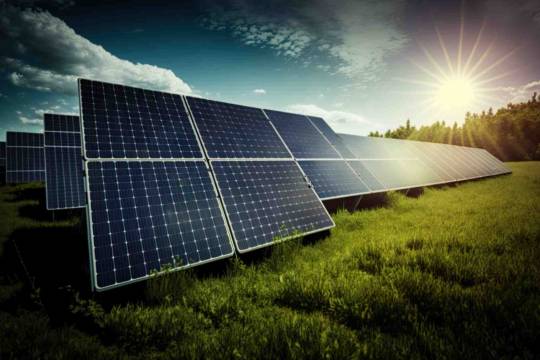
#Renewable #energy is the cornerstone of a sustainable future, offering a path to reduce our dependence on fossil fuels and mitigate climate change. Solar, wind, hydro, and geothermal power harness the natural forces of the Earth to generate electricity without emitting harmful greenhouse gases. Unlike finite fossil fuels, these resources are abundant and renewable, ensuring long-term energy security.
The shift to renewable energy is essential not only for environmental reasons but also for economic growth. Investing in clean energy technologies creates jobs, drives innovation, and fosters energy independence. As countries worldwide set ambitious targets for carbon neutrality, the adoption of renewable energy is accelerating, with solar and wind power leading the charge.
However, challenges remain. The intermittent nature of some renewable sources, like solar and wind, requires advancements in energy storage and grid infrastructure. Despite these challenges, the future of energy is undoubtedly green. By continuing to invest in renewable energy, we can power a sustainable future that benefits both people and the planet.
Click to Check:- https://www.headsupb2b.com/renewable-energy
#solar system#solar energy#solar power#solar panels#renewable energy#green technology#solar#solarpunk#hopepunk#humanity#electricity#clean energy#solar age#renewables#green energy#fossil fuels#good news#climate change#climate hope
8 notes
·
View notes
Text
On This Day In History
April 25th, 1954: Bell Telephone Laboratories demonstrates the first practical solar cell.
84 notes
·
View notes
Text
Google strikes a deal with a nuclear startup to power its AI data centers

🔹 Google is turning to nuclear energy to help power its AI drive. On Monday, the company said it will partner with the startup Kairos Power to build seven small nuclear reactors in the US. The deal targets adding 500 megawatts of nuclear power from the small modular reactors (SMRs) by the decade’s end. The first is expected to be up and running by 2030, with the remainder arriving through 2035.
🔹 It’s the first-ever corporate deal to buy nuclear power from SMRs. Small modular reactors are smaller than existing reactors. Their components are built inside a factory rather than on-site, which can help lower construction costs compared to full-scale plants. Kairos will need the US Nuclear Regulatory Commission to approve design and construction permits for the plans. The startup has already received approval for a demonstration reactor in Tennessee, with an online date targeted for 2027.
🔹 The company already builds test units (without nuclear-fuel components) at a development facility in Albuquerque, NM, where it assesses components, systems and its supply chain. The companies didn’t announce the financial details of the arrangement. Google says the deal’s structure will help to keep costs down and get the energy online sooner. “By procuring electricity from multiple reactors — what experts call an ‘orderbook’ of reactors — we will help accelerate the repeated reactor deployments that are needed to lower costs and bring Kairos Power’s technology to market more quickly,” Michael Terrell, Google’s senior director for energy and climate, wrote in a blog post. “This is an important part of our approach to scale the benefits of advanced technologies to more people and communities, and builds on our previous efforts.”
🔹 The AI boom - and the enormous amount of data center power it requires - has led to several deals between Big Tech companies and the nuclear industry. In September, Microsoft forged an agreement with Constellation Energy to bring a unit of the Three Mile Island plant in Pennsylvania back online. In March, Amazon bought a nuclear-powered data center from Talen Energy.
#artificial intelligence#technology#coding#ai#open ai#tech news#tech world#technews#ai hardware#ai model#ai news#google#internet#nuclear power#nuclear energy#clean energy
2 notes
·
View notes
Text
Scientists have developed a new solar-powered system to convert saltwater into fresh drinking water which they say could help reduce dangerous the risk of waterborne diseases like cholera.
Via tests in rural communities, they showed that the process is more than 20% cheaper than traditional methods and can be deployed in rural locations around the globe.
Building on existing processes that convert saline groundwater to freshwater, the researchers from King’s College London, in collaboration with MIT and the Helmholtz Institute for Renewable Energy Systems, created a new system that produced consistent levels of water using solar power, and reported it in a paper published recently in Nature Water.
It works through a process called electrodialysis which separates the salt using a set of specialized membranes that channel salt ions into a stream of brine, leaving the water fresh and drinkable. By flexibly adjusting the voltage and the rate at which salt water flowed through the system, the researchers developed a system that adjusts to variable sunshine while not compromising on the amount of fresh drinking water produced.
Using data first gathered in the village of Chelleru near Hyderabad in India, and then recreating these conditions of the village in New Mexico, the team successfully converted up to 10 cubic meters, or several bathtubs worth of fresh drinking water. This was enough for 3,000 people a day with the process continuing to run regardless of variable solar power caused by cloud coverage and rain.
[Note: Not sure what metric they're using to calculate daily water needs here. Presumably this is drinking water only.]
Dr. Wei He from the Department of Engineering at King’s College London believes the new technology could bring massive benefits to rural communities, not only increasing the supply of drinking water but also bringing health benefits.
“By offering a cheap, eco-friendly alternative that can be operated off the grid, our technology enables communities to tap into alternative water sources (such as deep aquifers or saline water) to address water scarcity and contamination in traditional water supplies,” said He.
“This technology can expand water sources available to communities beyond traditional ones and by providing water from uncontaminated saline sources, may help combat water scarcity or unexpected emergencies when conventional water supplies are disrupted, for example like the recent cholera outbreaks in Zambia.”
In the global rural population, 1.6 billion people face water scarcity, many of whom are reliant on stressed reserves of groundwater lying beneath the Earth’s surface.
However, worldwide 56% of groundwater is saline and unsuitable for consumption. This issue is particularly prevalent in India, where 60% of the land harbors undrinkable saline water. Consequently, there is a pressing need for efficient desalination methods to create fresh drinking water cheaply, and at scale.
Traditional desalination technology has relied either on costly batteries in off-grid systems or a grid system to supply the energy necessary to remove salt from the water. In developing countries’ rural areas, however, grid infrastructure can be unreliable and is largely reliant on fossil fuels...
“By removing the need for a grid system entirely and cutting reliance on battery tech by 92%, our system can provide reliable access to safe drinking water, entirely emission-free, onsite, and at a discount of roughly 22% to the people who need it compared to traditional methods,” He said.
The system also has the potential to be used outside of developing areas, particularly in agriculture where climate change is leading to unstable reserves of fresh water for irrigation.
The team plans to scale up the availability of the technology across India through collaboration with local partners. Beyond this, a team from MIT also plans to create a start-up to commercialize and fund the technology.
“While the US and UK have more stable, diversified grids than most countries, they still rely on fossil fuels. By removing fossil fuels from the equation for energy-hungry sectors like agriculture, we can help accelerate the transition to Net Zero,” He said.
-via Good News Network, April 2, 2024
#water#water scarcity#clean water#saline#desalination#off grid#battery technology#solar power#solar energy#fossil fuels#water shortage#india#hyderabad#new mexico#united states#uk#united kingdom#good news#hope#aquifers
999 notes
·
View notes
Text
Dandelion News - December 15-21
Like these weekly compilations? Tip me at $kaybarr1735 or check out my Dandelion Doodles for 50% off this month!
1. 7 good things humanity did to combat climate change in 2024
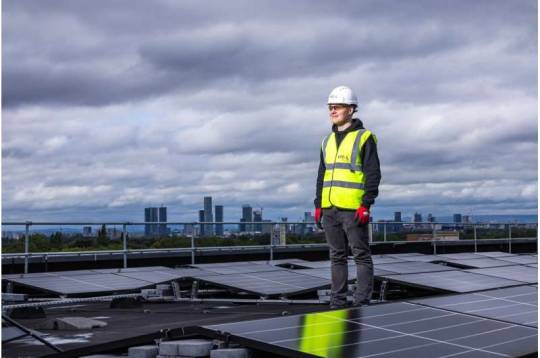
“The UK […] closed its final coal power plant in October. [… In India,] the share of power provided by coal dropped below 50% for the first time since the 1960s. [… A non-profit] has provided solar energy to more than 6,000 of the poorest Nigerians.”
2. California Voters Said Yes to Prop 4, a Win for Birds, People, and Our Shared Future

“[…] Prop 4 will direct millions of dollars for water conservation and habitat restoration [… and] includes a requirement that at least 40% of its funding go to lower-income and climate-vulnerable communities.”
3. This Pennsylvania school is saving big with solar and EV school buses

“Steelton-Highspire’s solar arrangement will save it about $3.6 million over the next 20 years. As for the electric school buses, Steelton-Highspire is one of thousands of districts able to access federal rebates from a $5 billion program created by the 2021 Bipartisan Infrastructure Law.”
4. Autism Speaks Canada shuts down in January. Good.

“As Canada’s autistic-led advocacy group […] we are relieved that Autism Speaks Canada will be shutting down in January of 2025. This is an opportunity for autistics and our families to collaborate locally to build new, neuro-affirming spaces and projects.” [If you don’t know why this is a good thing, please click here]
5. LA Zoo hatches first-ever perentie lizards, one of largest lizard species in the world
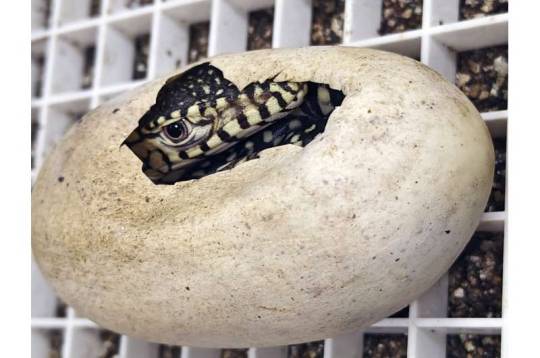
“The LA Zoo is one of only three institutions accredited by the Association of Zoos and Aquariums that have successfully reproduced them[….] Adult perentie lizards can reach more than 8 feet (2.4 meters) in length and can weigh more than 40 pounds (18 kilograms), the zoo said.”
6. Research reveals an inexpensive fix for California's struggling wildflowers

“[… R]aking [“dead, invasive grasses”] is decidedly less labor-intensive and more ecologically friendly [than other management techniques…, but doing so] increased plant diversity overall, reducing invasive grasses […] while increasing both native and exotic wildflowers[….]”
7. A new EV battery could last more than 8 times longer, travel farther
“[… A] typical battery lasts 2,400 cycles, while the new battery lasted more than 20,000 cycles. [… Used batteries could be repurposed] for grid storage on wind and solar farms, the study notes.”
8. Women who are homeless in Boston find safe space and care at 'HER Saturday'

“Women can get lots of other care on the spot — from sick visits and basic health screenings to Pap smears and contraception. [… They also come for] "The makeup, the snacking and the girl talks. And ... picking out a new outfit," said Pinky Valentine [“a homeless transgender woman”].”
9. ‘It absolutely took off’: five UK biodiversity success stories
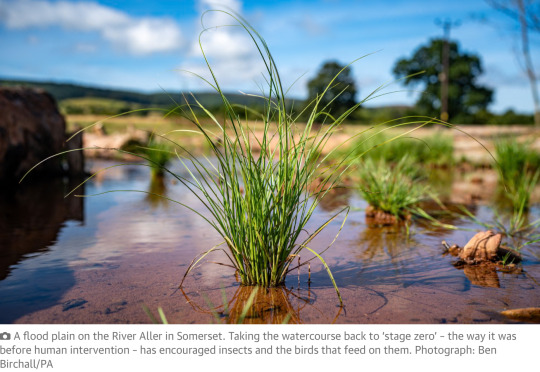
“[…N]ew methods are emerging to preserve, improve and generate new habitat and, in many cases, attract back or reintroduce species not seen for decades. After a nudge, ecosystems are often doing much of the heavy work themselves.“
10. Personalized gifts really do mean that little bit more to your loved ones, says research

“Research has also shown that receivers of personalized gifts are more likely to take care of them. […] In this sense, gift-giving can be not just an emotional exchange, but also a more sustainable one. A carefully preserved [personalised] gift avoids waste and brings long-term satisfaction.”
December 8-14 news here | (all credit for images and written material can be found at the source linked; I don’t claim credit for anything but curating.)
#hopepunk#good news#clean energy#world news#california#birds#habitat restoration#pennsylvania#school#electric vehicles#solar power#actually autistic#autism speaks#canada#autistic community#lizard#zoo#wildflowers#battery#technology#boston#homelessness#unhoused#biodiversity#christmas gift#uk#unique gifts#holiday#christmas#community
63 notes
·
View notes
Text
What Percentage of Cars Sold in 2023 Were Electric?
The automotive industry has been rapidly shifting towards electric vehicles (EVs), driven by increasing environmental concerns, technological advancements, and government incentives. The year 2023 marked a significant milestone in this transition. This transition has raised the question: What Percentage of Cars Sold in 2023 Were Electric? Let’s dive into the data to understand the impact and…

View On WordPress
#automotive industry#automotive trends#battery production#battery technology#car manufacturing#car market trends#car sales 2023#charging infrastructure#charging networks#China EV market#Clean Energy#cobalt#consumer acceptance#electric cars#electric mobility#electric vehicles#environmental awareness#Environmental Impact#Europe EV market#EV adoption#EV incentives#EV maintenance#EV technology#EVs#Ford#future of cars#General Motors#global sales#Government Incentives#green alternatives
2 notes
·
View notes